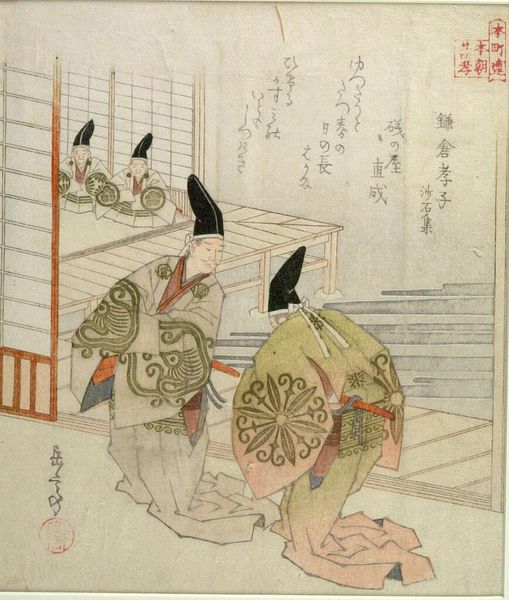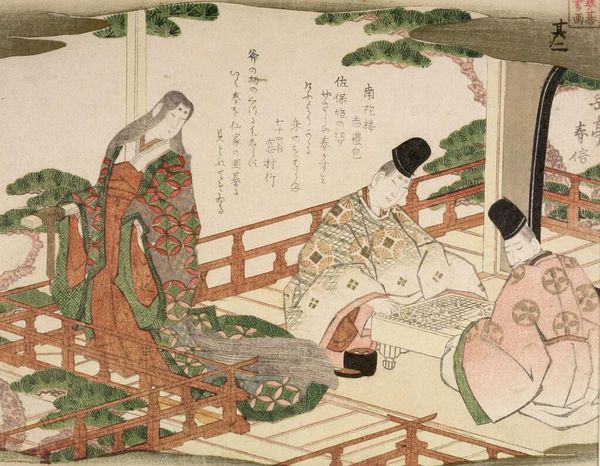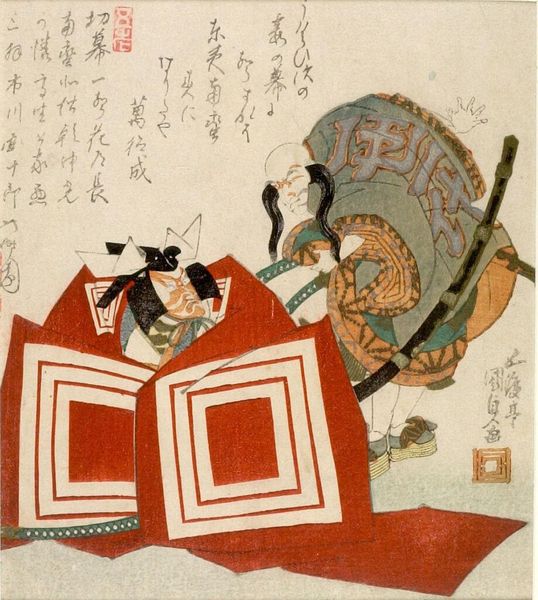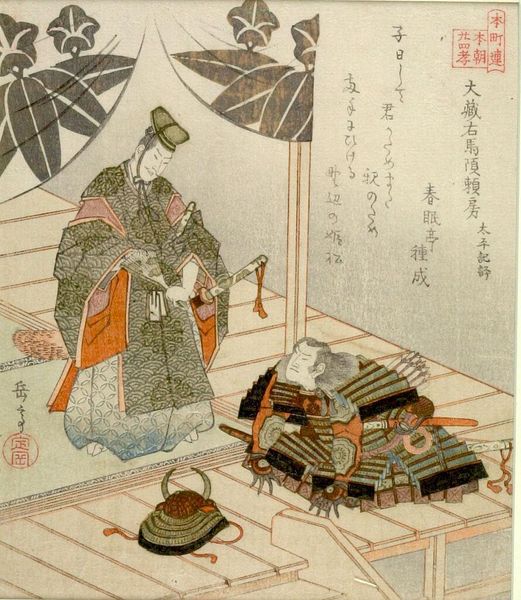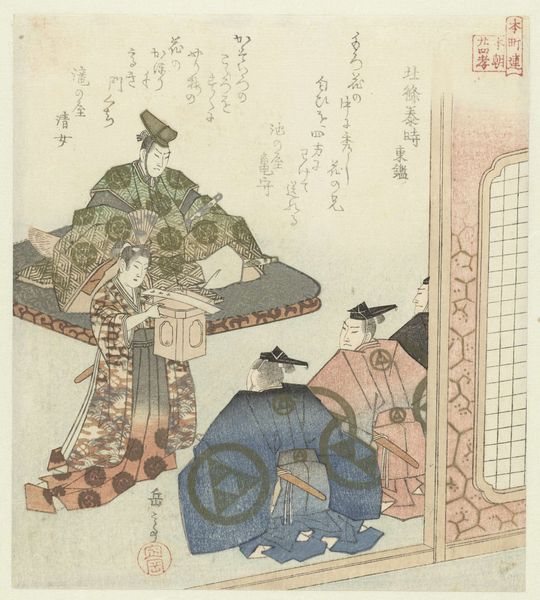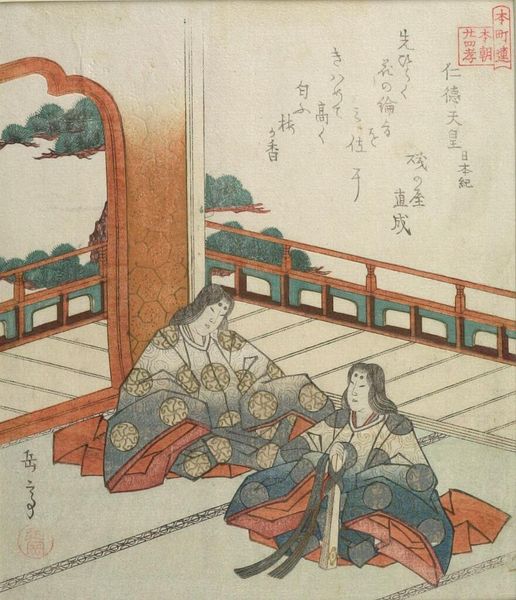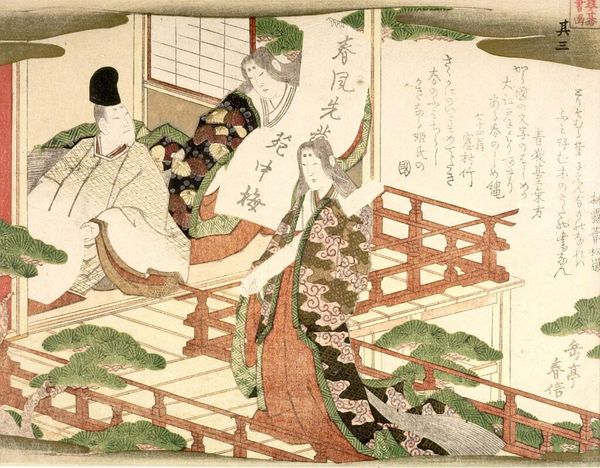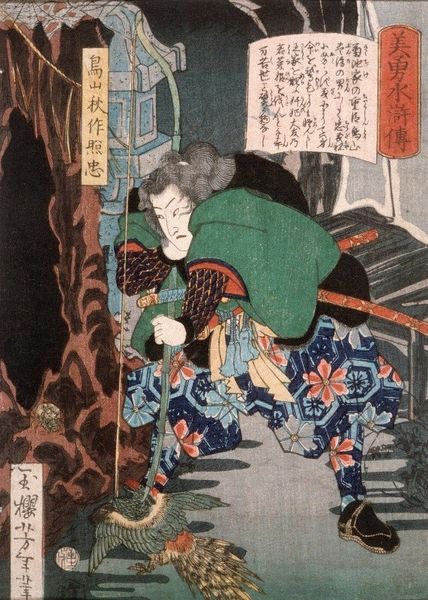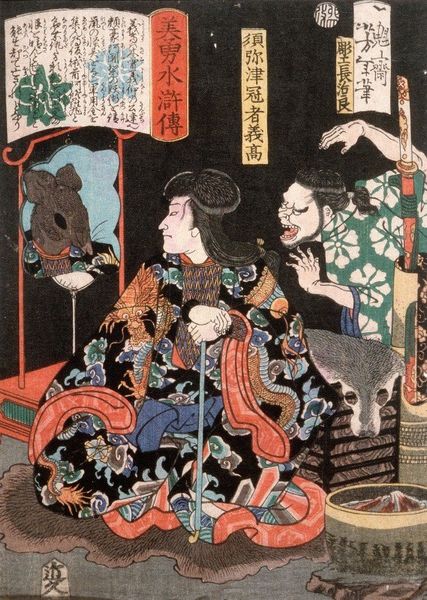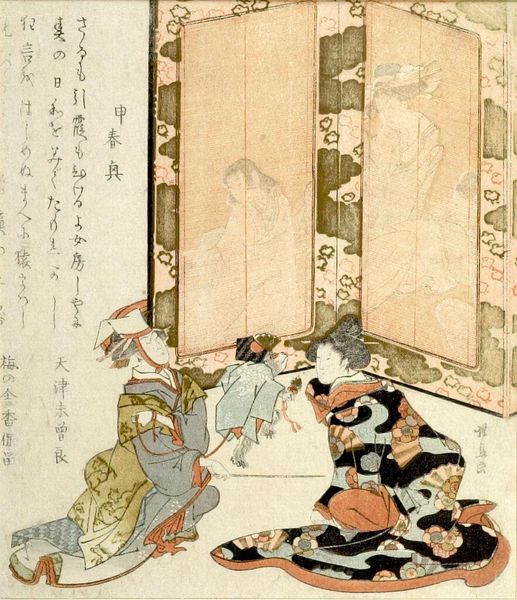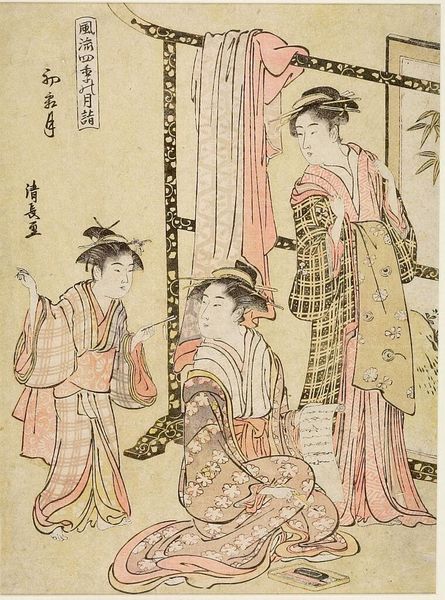
HÅjÅ Yasutoki (Azuma kagami), from the series Twenty-Four Japanese Paragons of Filial Piety for the HonchÅ Circle (HonchÅren honchÅ nijÅ«shikÅ), with poems by Ikenoya Kamemori and Takinoya Kiyome c. 1821 - 1822
0:00
0:00
Dimensions: Paper: H. 20.4 cm x W. 18.0 cm (8 1/16 x 7 1/16 in.)
Copyright: CC0 1.0
Curator: Yashima Gakutei's print, "HÅjÅ Yasutoki," presents a scene from the "Twenty-Four Japanese Paragons of Filial Piety." The composition immediately strikes me as formal, almost theatrical. Editor: It's hard to ignore the power dynamics at play here. You have HÅjÅ Yasutoki elevated on a cushion, while others are kneeling. It speaks to his position of authority, particularly within the context of feudal Japan. Curator: The intricate patterns in the clothing create a visually arresting surface, and the vertical lines of the screen ground the composition. These details underscore the print's sophisticated design. Editor: But that sophistication masks the realities of the time. The emphasis on filial piety, while seemingly virtuous, often served to reinforce patriarchal structures and suppress dissent. Curator: I see it more as Gakutei utilizing the visual language of ukiyo-e to explore spatial relationships and the interplay of form, while those poems add another layer to its meaning. Editor: And I see a commentary on the roles and expectations imposed on individuals within a rigid social hierarchy, using "filial piety" as both a subject and a critique. There is something deeply problematic about idealizing this kind of submission.
Comments
No comments
Be the first to comment and join the conversation on the ultimate creative platform.
